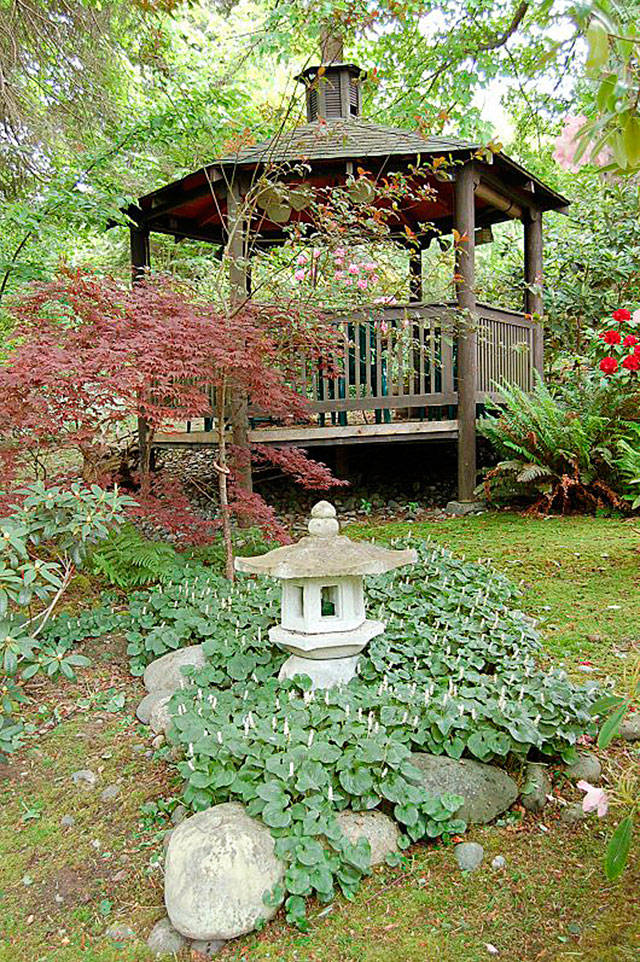Editor’s note: This is the final submission of the 2017 “Get It Growing” series. Look for the series to return in 2018. — MD
Plants native to the Olympic Peninsula have evolved over thousands of years to suit our unique climate, soil conditions and moist coastal weather systems. Acclimated to the environment, native plants are exceptional for problem areas in landscaping, requiring less maintenance.
Consider using native plants to provide color, screening and shade to landscaping as well as natural habitat for birds, butterflies and other inviting wildlife.
Planning and selection
When planning your landscape to include native plants, it is important to note the different existing conditions of the site. Understanding the amount of sunlight and moisture as well as the type of soil in the area will help in choosing plants that will thrive for the given environment.
Determine appropriate plants for the location by evaluating and imitating nearby natural surroundings. Identify native plants in settings similar to the conditions of your site.
Some native plants perform better than others in moist or standing water locations. Take note of where seasonal bodies of water or occasional pooling form. For areas that are frequently wet and subject to erosion, select suitable woody native plants favored for their deep roots helping to reduce erosion and allow storm water to penetrate into the ground.
Follow the sun’s path during all seasons to determine how much light the area receives. Position plants where appropriate for the amount of light and moisture they require. See the attached chart for a list of native plants detailing preferred environments.
To create a complete wildlife habitat, choose native plants with varying heights and a wide assortment of beneficial characteristics. A three-layer canopy of ground cover, shrubs and trees, with a source of available water, is required to attract and sustain wildlife by providing food, homes and protection.
Obtaining plants
Most methods of obtaining native plants involve removing plants or portions of plants from their natural environment. Use care and good ethics when collecting specimens; after all, the objective is to create and enhance natural habitat.
• Be sure you have proper permission and permitting before collecting
• Do not gather from wetlands or environmentally sensitive areas
• Do not take more than 5 percent of any plant or seeds from a plant to allow for regeneration
• Consider only salvaging whole plants from natural settings in the path of imminent destruction
• Do not collect from rare or endangered species
• Be sure to use all that you collect
Beyond buying from nurseries and other commercial outlets, the Clallam Conservation District holds an annual native plant sale, taking orders in January for early March pick up.
Watch for details about Master Gardener plant sales. DIY growing of native plants is not difficult and there are many propagation methods to collect plants from your yard or the wild.
Growing from seed is the most ecologically sound method. Methods that include taking cuttings of certain parts of plants may produce quicker than seed.
Hardwood cuttings and “live stakes” from most deciduous plants can be taken after the leaves fall. Some plants are easily collected from rhizomes, or naturally divide so can be placed directly into soil as a new plant.
Taking care
Maintenance is minimal. Because they are well adapted, native plants are resistant to damage caused by diseases and insects; thereby reducing the need for using harmful garden chemicals. Planting trees and shrubs is best done during cooler months to avoid supplemental watering and minimize plant stress.
Once established, most native plants will not need to be watered or fertilized. Water newly introduced plants deeply and frequently for the first summer or two.
Enjoy carefully selected native plants that require little care and add many benefits to your landscape.
Michele Mangiantini is a Clallam County Master Gardener.



